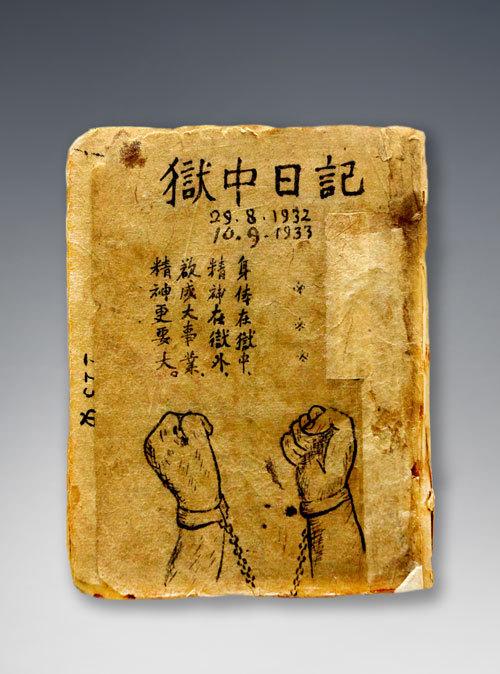The home to Vietnam’s national treasures
VietNamNet Bridge – The National History Museum in Hanoi contains 16 out of a total of 104 national treasures of Vietnam. The boa...
http://globalexpressnews.blogspot.com/2016/04/the-home-to-vietnams-national-treasures.html
The
boat-shaped tomb of Viet Khe, made of wood and brass, 476 cm long, 77
cm wide, 60 cm thick, 39 cm deep. The tomb was discovered at a
construction site in Viet Khe, Phu Ninh commune of Thuy Nguyen district,
Hai Phong city in 1961. It dates back to the Dong Son culture of 2,500
years ago. It is a kind of coffin made from a tree trunk. The boat grave
contains 107 rare items of the Dong Son culture, such as axes, spears,
swords, vases, ladles, bronze bells...

The
Ngoc Lu drum is cast of bronze, with diameter of 79.3 cm, 63 cm high,
dating back 2000-2500 years ago, under the Dong Son culture. The
drumhead is cast with a star with 14 points and 16 motifs from the
center. The drum-barrel is decorated with patterns like boats, people,
birds ... Of the thousands of bronze drums discovered in Vietnam, the
Ngoc Lu drum is the most typical kind of the Dong Son culture. In daily
life, the bronze drum was both a musical instrument and a symbol of
power of the ruling class in the Hung King age.

Like
the Ngoc Lu bronze drum, which represents the pinnacle of the art of
bronze casting of Vietnamese people in the early time of the nation is
the Hoang Ha bronze drum. The drum has a face diameter of 78.5 cm, 61.5
cm high. In the middle of the drumhead is a 16-point star and 6 circles
of patterns, 5 warships moving from left to right, with the militants
carrying weapons, killing prisoners...

The
Dao Thinh bronze jar of 98 cm tall, dating back to 2000-2500 ago, also
belongs to the Dong Son Civilization. The cylindrical jar is decorated
with the sun pattern in the middle, surrounded by 11 circles of motifs.
On the lid are four pairs of statues, featuring couples having sex
(currently only 2 couples exist). The Dao Thinh bronze jar is the
message of the past for future generations about the material life and
aspirations and the proliferation of humans and things of wet rice
agriculture. In addition to the Dong Son bronze drum, the Dao Thinh
bronze jar is the largest size of artifacts ever unearthed in Vietnam.

The
statue of two people carrying each other on the back, belonging to the
Dong Son culture, dating back to 2000-2500 years ago. The person on the
back holds the carrier with one hand and the other hand holds a
pan-pipe. This is a rare antique of the art of statue of of Dong Son
period, which vividly reflects an aspect of a developed society,
especially music.

The
kneeling-man shaped lamp is 40 cm high, 27 cm wide, weighing 1.9 kg,
dating back to 1700-2000 years ago. The lamp was discovered in a tomb in
Lach Truong, Thanh Hoa Province. The lamb is in the shape of a
half-nude man who kneels and raises the lamp with his hands. He wears a
crown. On his thighs and behind him are the four kneeling musicians.
This is the largest lamp of the same type, showing casting techniques
and aesthetic sense of the ancient inhabitants of the post-Dong Son
culture.

The
Vo Canh stone stele is the oldest stele of the ancient Kingdom of
Champa left in Vietnam. The stele is engraved with ancient Sanskrit
letters, with valuable information. The stele was made in the 2nd – 3rd
centuries, under the Champa culture. The epigraphy carved on the stele
is the oldest in Southeast Asia, 3 faces with Sanskrit inscriptions.

The
bronze bell named Van Ban, 127 cm high, 80 cm diameter, dating back to
the 13th – 14th centuries under the Tran Dynasty. It is decorated by the
double lotus petals. The bell handles are two dragons turning back to
back, the top of the handles are created by the lotus. The bell was
found in the waters of Do Son (Hai Phong) in 1958. This is an exclusive
antique, related to the Van Ban Pagoda, Tuong Long tower in Do Son,
which is valuable for the study of history, titles and Buddhism in the
Tran Dynasty.

The
Mon Ha Sanh bronze seal, cast in 1377 under the reign of King Tran Due
Tong. The seal was used on important administrative documents of the
court from the Tran Phe De Dynasty and the later.

The
blue and white ceramic vase decorated with a swan motif of 56.5 cm
high, dating back to the early Le Dynasty (15th – 16th centuries). The
decorative patterns on the vase are the typical patterns of the northern
plains reflecting the peak of ceramic art of the early Le Dynasty. The
vase was produced in Chu Dau pottery village (now in Nam Sach district,
Hai Duong province) - one of the largest ceramic production centers of
the country at that time. The vase was found in a shipwreck in Cu Lao
Cham (1999-2000).

The
stele of the Nam Giao Esplanade is one of the most valuable relics of
the Nam Giao Esplanade. The stele was built in 1679. The stele revealed
historical significance and the construction process of the Esplanade
where the King and mandarins performed the great ceremony to pray for
peace and prosperity for the country.

The
Canh Thinh bronze drum with a diameter of 49 cm, 37.4 cm high was cast
in 1800, under the Tay Son Dynasty. This is a unique ancient drum in
Vietnam that simulated the traditional leather drum of Vietnam. The
scripts on the drum is about Ms. Nguyen Thi Loc, the wife of a mandarin
under King Le The Tong (1736) who contributed to building the Linh Ung
Pagoda.

The
Sac Menh Chi Bao seal was cast in 1827 under the reign of Emperor Minh
Mang. This is an exclusive item, the symbol of imperial power. It is
made of pure gold, with sophisticated patterns.

The
book “Duong Kach Menh” (Revolutionary Path) by Nguyen Ai Quoc - Ho Chi
Minh City, with 100 pages, published in Guangzhou (China) in 1927. The
book consists of lectures by Nguyen Ai Quoc in 1925-1927.
 The “Diary in Prison” of 79 pages of President Ho Chi Minh. The poetic diary was written by President Ho Chi Minh in prison in Guangxi (China) from 8/1942 to 9/1943.  |
| Photo: VNE |









